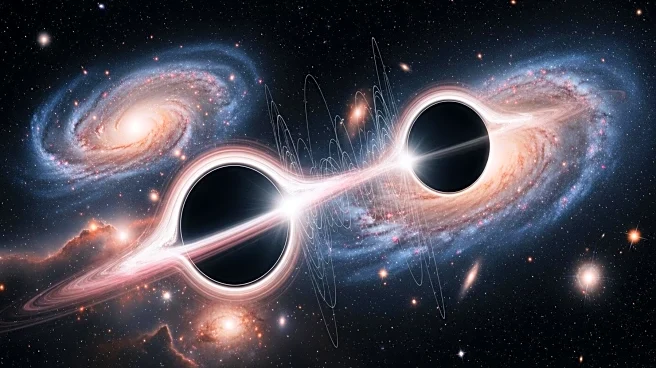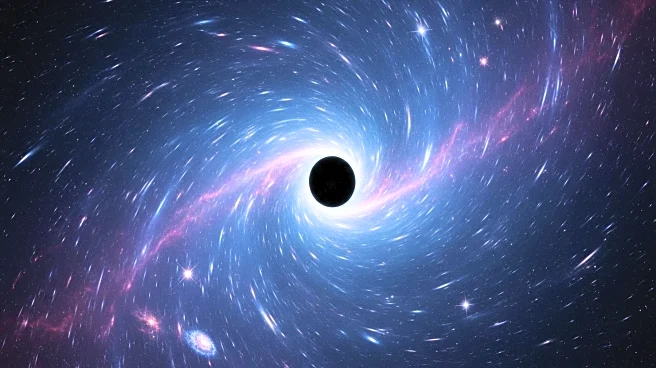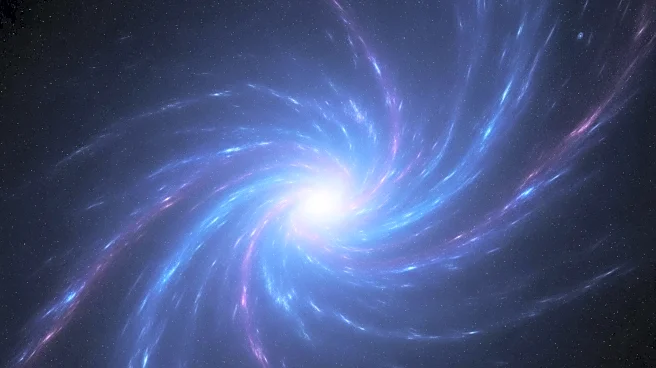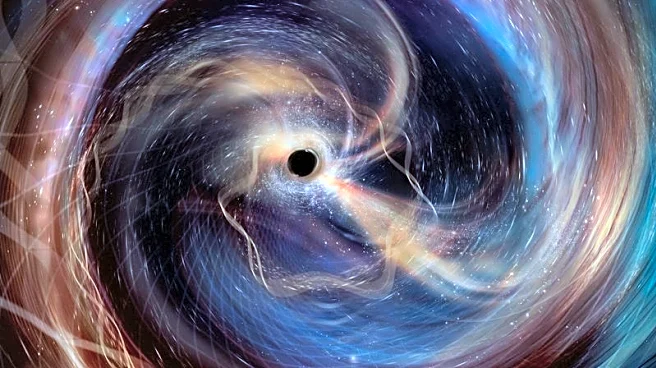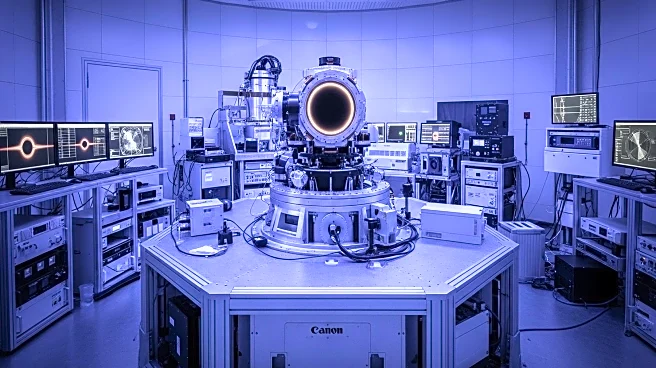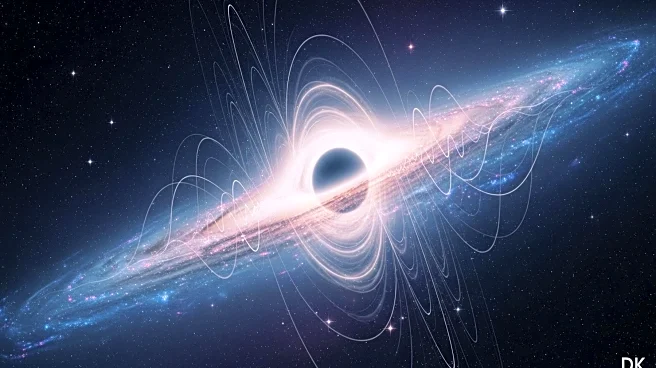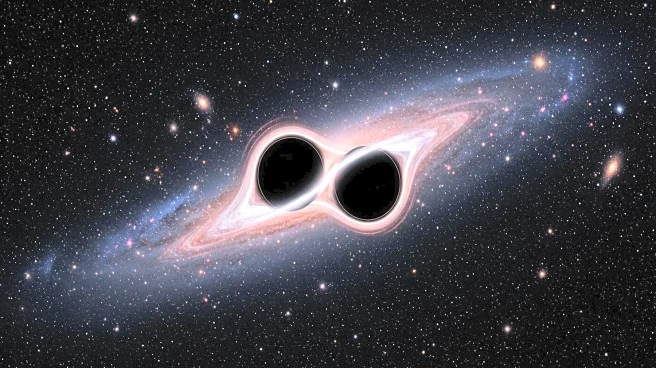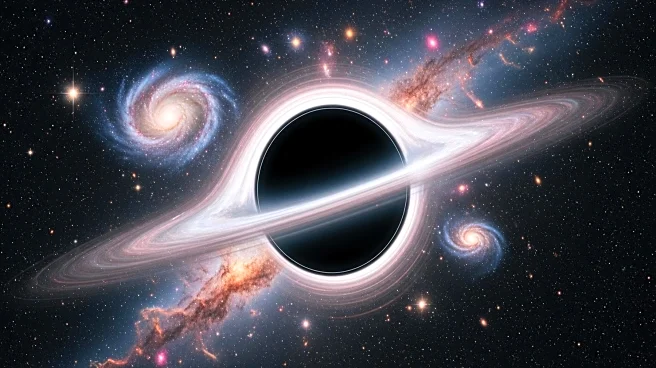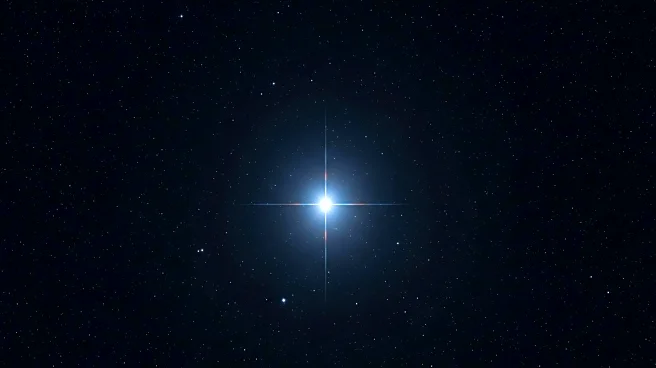What's Happening?
Astronomers have observed a collision between two black holes, providing unprecedented detail and confirming predictions by Albert Einstein and Stephen Hawking. The event, known as GW250114, was detected using the Laser Interferometer Gravitational-Wave Observatory (LIGO) in the U.S. The collision produced gravitational waves, which are ripples in space-time, confirming Einstein's theory of relativity. The black holes involved were each about 30 to 35 times the mass of the sun and merged to form a new black hole spinning at 100 revolutions per second. This observation offers a clearer view of black hole dynamics and supports theoretical predictions about their simplicity and surface area.
Why It's Important?
The confirmation of Einstein and Hawking's predictions through this black hole collision has significant implications for the field of astrophysics. It validates the theoretical framework of general relativity and supports the notion that black holes are simple objects defined by mass and rotation. This discovery enhances our understanding of space-time dynamics and could contribute to the integration of general relativity with quantum mechanics. The findings also demonstrate the capabilities of LIGO and similar observatories in advancing gravitational wave astronomy, potentially leading to new insights into the universe's evolution.
What's Next?
Future observations with improved instruments are expected to provide even more precise tests of gravitational theories. The ongoing enhancements to LIGO and its sister observatories, Virgo and KAGRA, will likely lead to more detailed detections of black hole mergers. These advancements could further test fundamental physics and refine our understanding of spacetime and gravity. Scientists anticipate that upcoming observations will continue to challenge and confirm theoretical predictions, paving the way for breakthroughs in astrophysics.
Beyond the Headlines
The ability to detect gravitational waves with such precision opens new avenues for exploring the universe's mysteries. This milestone in gravitational wave astronomy highlights the potential for discovering unknown aspects of cosmic phenomena. The confirmation of Hawking's surface area theorem also suggests that black holes may play a crucial role in the quest to unify general relativity and quantum mechanics, a long-standing goal in physics.
